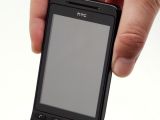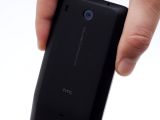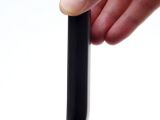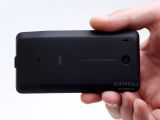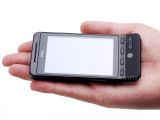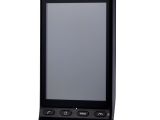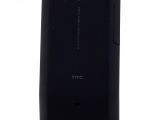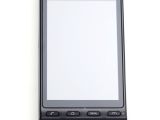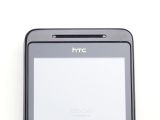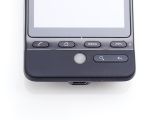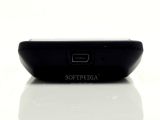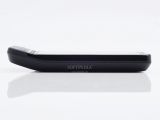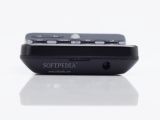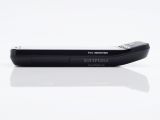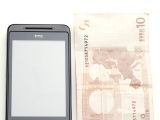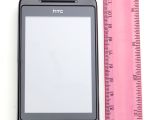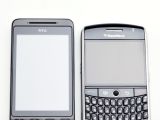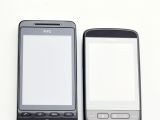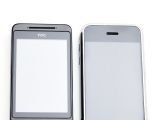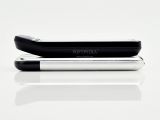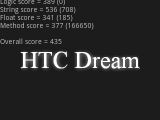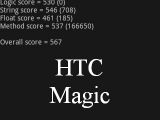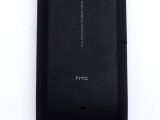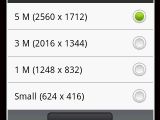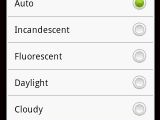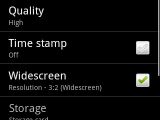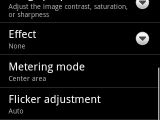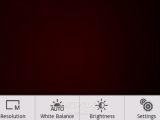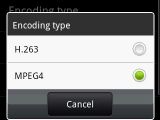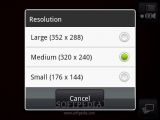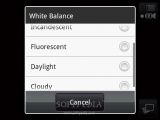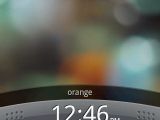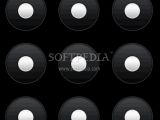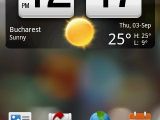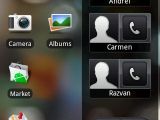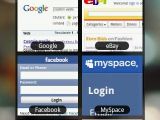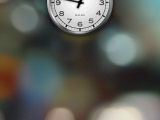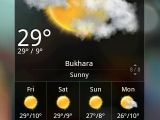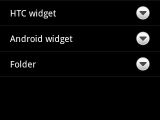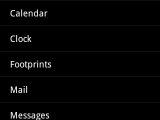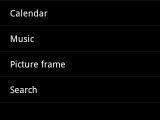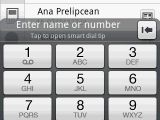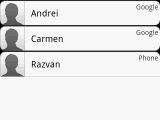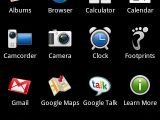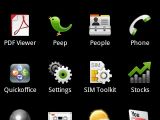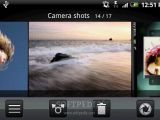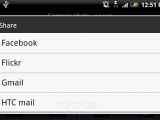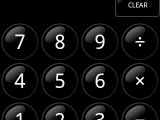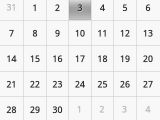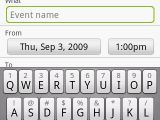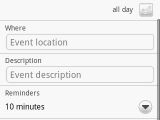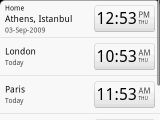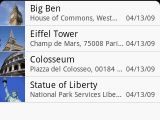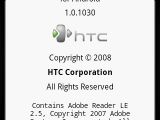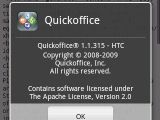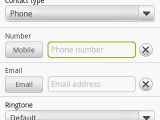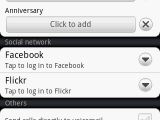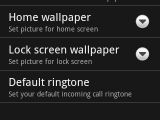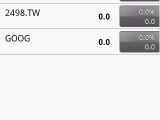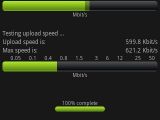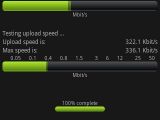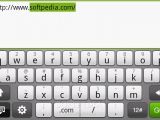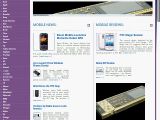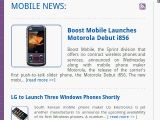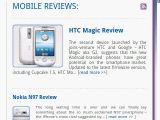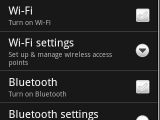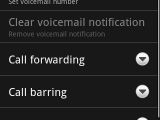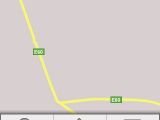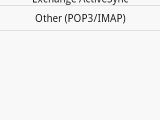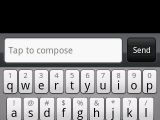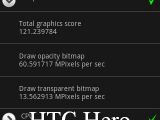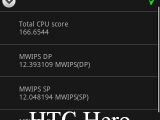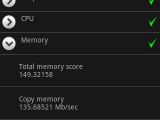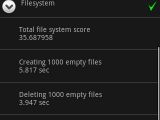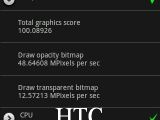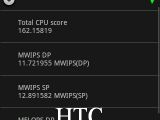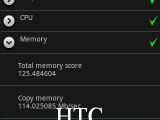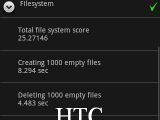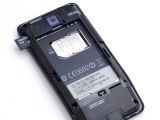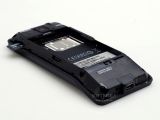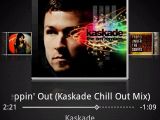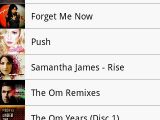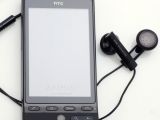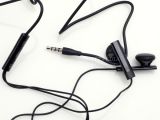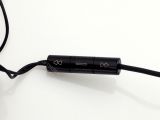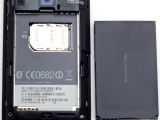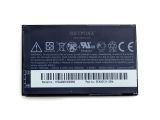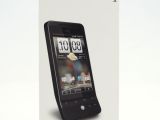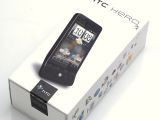HTC strikes again with another smartphone featuring the much acclaimed Android operating system. Sporting a fresh and stylish design, as well as a new innovative GUI, HTC Hero shakes the world of smartphones through its performances. Even though its specs are not well over anything on the market, the way it works makes Hero the best Android device and perhaps one of the best smartphones on the market. As I see it, this is the main rival of Apple's iPhone. I will avoid making too many comparisons between the flagship devices from the three main manufacturers that pretend to own the best smartphone on the market: Nokia N97, iPhone and HTC Hero, as people tastes and needs are very different. Instead, I'll try to point out some of the qualities and downsides of Hero, as well as the traits that make it better than its main rivals.
HTC Hero was announced in June 2009 and launched on the market one month later, in July 2009. The smartphone is available in a plethora of colors: Brown, White, Graphite, Black and Pink. The unlocked version of HTC Hero can be bought for around 650USD, but the price may vary depending on the location.
Design
Following the design of the first two Android devices, Hero features the same curved form factor. Hero's curved shape is more obvious now, which also has a technical advantage as the mic will be closer to your mouth during phone calls. The phone is made from a special plastic that looks like teflon. Unfortunately, this is a fingerprint magnet, and together with the large touchscreen, which will be full of grease in no time, are some of the downsides of the gadget, in case you hate to dirt your phone. Of course, a small cloth for wiping will probably solve this, but the problem remains, as the fingerprints will reappear the moment you put your hands on it. The same goes for the touchscreen, which can only be controlled by finger.
Nevertheless, the phone's design should make users forget about this downside. There are no external keys around the phone, except the long volume key, which has been hidden in the phone's case, on the upper left side. On the top side of the phone, HTC placed a 3.5mm jack port, while on the bottom side, there's a miniUSB port. Under the 3.2-inch display, there are four keys, symmetrically arranged, starting from left to right, these are: Accept calls, Home, Menu and Reject calls (Power on/off). Right under these keys, in the middle, you'll notice the excellent trackball. To the right of it, there's a dual key that features a Search key and a Back key. The Search key will open a Google window, which will enable users to quickly search for whatever they need. The 5-megapixel camera on the back of the phone doesn't have any protective lens, instead it has been placed a little bit inside the back cover for minimal protection. As the camera doesn't feature any flash capabilities, you will notice to the left of the camera a very small loudspeaker. Under the hood of the device, you'll find the SIM slot card and the microSD slot for memory card. The latter is a little bit harder to find on the upper left corner of the phone, but it's hot-swappable, as you won't need to pull out the battery to insert the memory card. HTC Hero measures 112 x 56.2 x 14.4 mm and weighs 135g (including battery), which makes it a very well balanced device. You may be wondering how it will fit in your pocket with its curved shape, but I didn't have any problems with it. It feels great in hand, thanks to the exquisite compound that covers it, and because the controls have been placed on the base curved part, it will be much easier to access it. I think the curve form is the main attraction of the smartphone at first glance. Overall, HTC Hero's design is very stylish and ergonomically thought.Display and Camera
HTC Hero features a 3.2-inch TFT capacitive touchscreen that supports 65K colors and a 320x480-pixel resolution. Even though it seems to be the same display that HTC Magic has, this one is perfectly visible under strong sunlight. Another new feature introduced is the multi-touch input method, which makes it even easier to control. Otherwise, thanks to the technology embedded, it eliminates the need for a stylus and makes your own finger the only way you can control your device on the screen.
The accelerometer works with a low number of applications (Gallery included). Anyway, the image quality is flawless, and the change between landscape and portrait mode is smooth and includes animation. Everything you do seems effortlessly natural when using the touchscreen: touching, dragging, or moving. This proves again that the technology that stands behind these capacitive touchscreens is superior to that of resistive displays. The scrolling process is even better than that of the iPhone, while the virtual on-screen keyboard is very easy to control. In fact, I think all these are superior to iPhone, as it also benefits from the haptic feedback feature. The 5-megapixel camera on the back of the phone doesn't feature advanced functions, instead you only get autofocus. The maximum resolution that can be used to take pictures is 2592 x 1944 pixels. While night pictures are out of the question, users will still be able to take more than decent day snapshots. Even though you don't have functions like smile detection or blink detection, I'd say that the camera is almost on par with that of Nokia N97, which is also obsolete. I cannot compare it with the iPhone's as we all know that Apple's smartphone is no better than average. The user interface is pretty simple without any complex settings and can be browsed by touch. The shutter of the phone is the white trackball. The latter is a little bit weird to use instead of a dedicated camera key, as it doesn't feature the half-press function for autofocus. Instead, you will simply need to point the camera to the object of your shooting and press the trackball. The camera will automatically autofocus in about 1-2 seconds, while the saving process will take another 1-2 seconds. It may feel weird, but it's definitely much easier to take pictures. The camera of the smartphone can also record clips, but to my disappointment, it only records CIF clips at 15fps. There's not much to discuss about quality, just that the feature is there and you can use it to some degree. Overall, I think the 5-megapixel camera takes above average pictures, but it might be a good idea to upgrade the module with new advanced features like Samsung and LG are already doing.Menu and Software
HTC Hero runs Android operating system, including Cupcake 1.5. The innovation comes from the new graphical user interface that has been put over the OS and called Sense. The new UI can be officially installed on any previous models of HTC Magic that are unlocked. HTC stated that those that bought their HTC Magic smartphone locked on various operator networks won't be able to benefit form this upgrade.
Still, rumors say that there's a workaround that lets users install Sense even on G1 devices. Anyway, the new GUI resembles a little the TouchFLO UI that has been made especially for Windows Mobile devices. It seems that HTC changed a large chunk of TouchFLO to offer a new eye-candy and more user-friendly graphical interface. And what a great job they did. First of all, you can now take advantage of seven Homescreens, which can be populated with two kinds of widgets. Those that were usually included in the Android interface and a wide range offered by the new Sense interface. As seen in the screenshots, you can add Wi-Fi, Bluetooth, favorite contacts, music player, camera, market, Google Maps and much more directly on any of the seven Homescreens. The transition between these is fast and smooth, more responsive than TouchFLO's transitions. The standard Homescreen includes the weather widget, which updates at regular intervals if you have a data connection available. Under the weather widget (which also includes the clock), you will notice four shortcuts: Messages, Mail, Browser and Calendar. There's even a Homescreen that includes previews of some well-known web pages: Google, eBay, Facebook, MySpace, BBC, CNN, Wikipedia and Amazon. Holding the Home button pressed for a few seconds will bring up a task manager, which will display the last six applications that you opened. These remain active in the smartphone's memory, so if you open the seventh, the first application you have previously accessed will automatically be closed. There's also a dedicated YouTube video player, which gives you a fast access to clips hosted by YouTube. Other applications pre-installed include QuickOffice, PDF Viewer, Footprints, Stocks, VoiceRecorder and Teeter. The new Sense GUI radically changes the phone's menu aspect in a positive way, making HTC Hero one of the most user-friendly and smooth smartphone available on the market.Communication
HTC Hero boasts all possible connectivity tools that should be included in a high-end device: GPRS and EDGE class 10, HSDPA 7.2 Mbps and HSUPA 2 Mbps, Wi-Fi 802.11 b/g, Bluetooth 2.0 with A2DP, miniUSB 2.0. As you can see from the tests below, the device reached speeds of up to 2350.4 Kbit/s download and 621.2 Kbit/s on Wi-Fi connection and 1115.2 Kbit/s download and 336.1 Kbit/s upload on the Orange 3G+ network. These performances are more than welcome for a device that mostly depends on the data transfer to update its widgets or for fast Internet browsing.
The integrated browser WebKit cannot be closed but it seems upgraded compared with the previous two Android devices: Magic and G1. The control can only be compared with the iPhone's. You can now take advantage of the multi-touch gestures to quickly zoom in/out. The browsing experience is one of the best embedded into a smartphone. HTC Hero is the first Android smartphone with full support for Flash. Version 10 has been included with the device and Adobe stated that it has about 90% compatibility. I only found one website where the animated pages are not fully loaded and I browsed a lot. I'd say it's a 5-10% chances that a Flash site would not completely load. But otherwise it works very smoothly. Bluetooth still hasn't received its upgrade and can mostly be used for headset support. You don't have the possibility to transfer files over the Bluetooth connectivity, as the platform lacks the OBEX protocol. Let's hope that future updates will make available this feature too. HTC Hero is compatible with all email clients and protocols (POP3, IMAP) and can be synchronized with Microsoft Exchange. The rest of the email accounts can be set to be checked at various intervals (five, ten, 30 minutes). The device is also compatible with SMS, EMS, and MMS text features. Instant-messaging options include Google Talk, but other IMs can also be installed. The interface is pretty straightforward and user-friendly. The Wi-Fi 802.11 b/g connectivity is another option that will surely reduce costs for those that are heavily using Internet browsing or data transfers. The built-in GPS receiver and digital compass work together with the Google Maps, so that you won't get lost. Unfortunately, there's no software behind the integrated GPS receiver, so vocal guiding is out of the question. HTC Hero is a quad-band GSM (850 / 900 / 1800 / 1900) handset that is also compatible with HSDPA 900/2100 networks. The in-call sound quality is excellent, one of the best that I have encountered in HTC devices. The GSM signal is also good, but avoid keeping the gadget set on the 3G band, as the reception is rather mediocre.Processor and Memory
HTC Hero is powered by a single Qualcomm MSM7200A ARM11 family processor, running at speeds of up to 528 Mhz. Overall, I haven't experienced any lock-downs, crashes, or lags. Moreover, the phone acts very fast to any command, even when multiple applications are running in the background. Even though it's been added a new great looking graphical interface, the phone seems to be working excellent with no apparent hiccups.
The smartphone embeds 288 MB RAM and 512 MB ROM memory. The storage space can be expanded up to 32GB through the hot-swappable microSD slot card that has been placed under the back cover, on the left upper corner of the phone. The sales package also contains a 2GB or a better microSD card, depending on the location.Multimedia
HTC Hero features an MP3 player that can also be used as a widget from the Homescreen. Unfortunately, there are no visible upgrades since the last Android device. This may be the only downside of the phone. Still, HTC is not known for its good quality music phones, so we should’ve expected this. Even though the MP3 player looks nice, you are still unable to use any kind of equalizers or visualization effects. The only improvement that can be easily noticed is the added 3.5mm jcak port on the top side of the phone. Thus, you will now be able to add your own headphone for a better music playback experience.
The music player supports audio files in MP3, AAC, AAC+, WMA, MPEG4, WAV, MIDI, Real Audio and Ogg formats. The music sound is somewhat average in quality, but a little bit too low. The video player that appeared for the first time into Magic's firmware is also present in this model, but do not look for it in the menu. The video player will open itself every time you click on a video file. HTC Hero wasn't made to be used as an MP3 player, that's for sure, but at least it offers some decent features for those that want to casually listen to some music or watch a short movie.Battery
HTC Hero includes a slim 1350 mAh Li-Ion, which has an officially stated life expectancy of 440 hours in standby (750 hours for 3G) and 8 hours in talk-time mode (7 hours for 3G). Our test unit made it for about two days, but it was heavy used. During the tests, I noticed that you can prolong battery life if you disable the live connection for all widgets that need to updated regularly, and the emails. In fact, you can almost double the lifetime of the battery by doing these changes, which means that you will only need to charge it twice per week at most. Anyway, HTC Hero has one of the best autonomies from all other Android devices.
Impressions
The latest Android smartphone from HTC and the first to feature the new Sense interface attracts users with every aspect. Design, GUI, ease of use, performance, these are making the Hero one of the best choices for those in search of a good-looking, powerful smartphone. I was very happy to use the phone and I can say that HTC has made almost a perfect job in trying to offer an alternative to the Apple's iPhone.
The Good
The Bad
Sales Package
HTC Hero handset; Stereo headset; 2GB microSD Card; 1350 mAh Li-Ion Battery; Charger; USB Cable.
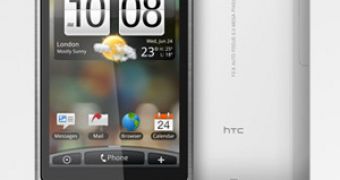
 14 DAY TRIAL //
14 DAY TRIAL // 
